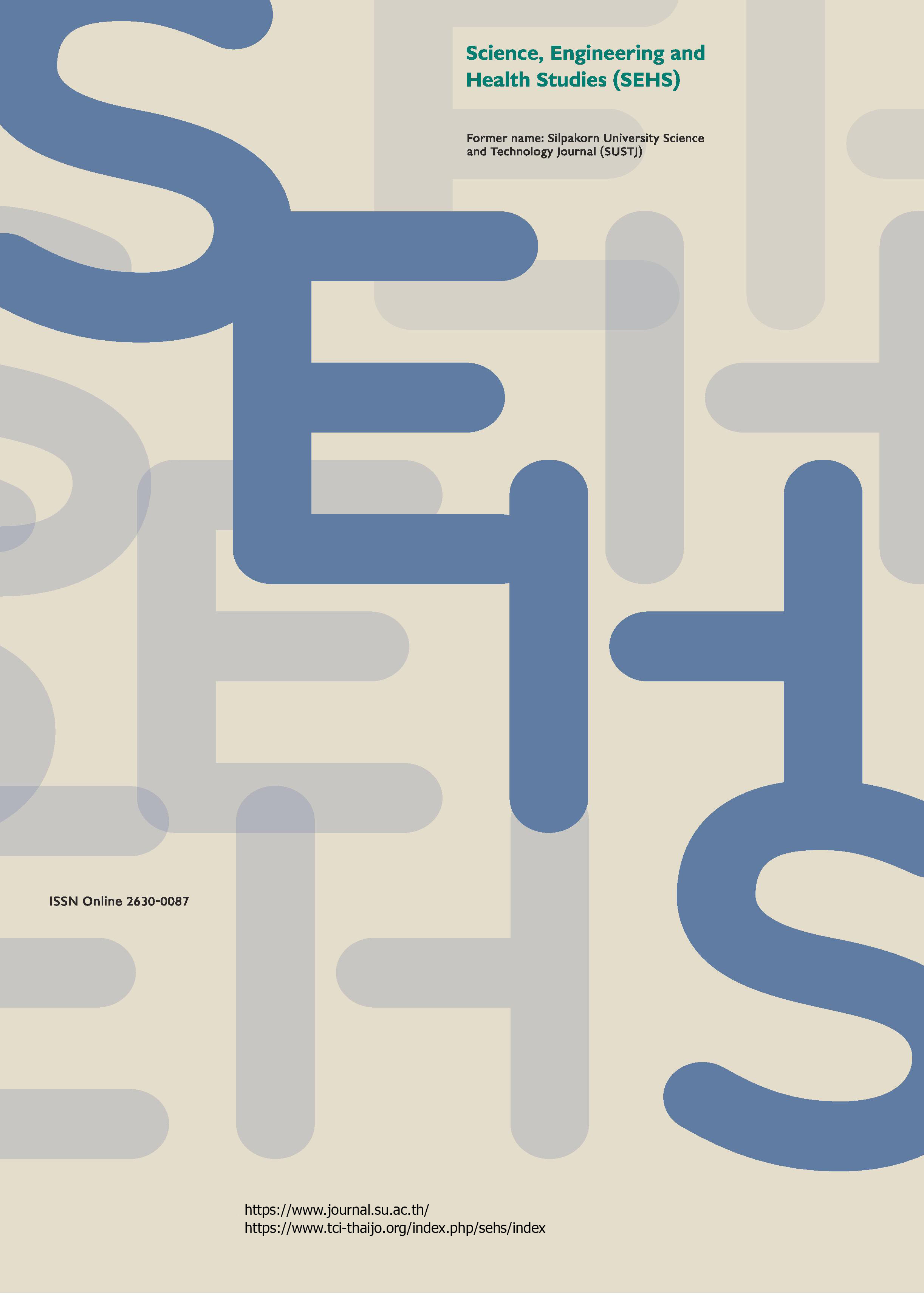Development of a low-cost reverse vending machine for clear plastic bottles and aluminum cans
Main Article Content
Abstract
The trend of environmental conservation has become an interesting topic over the past decade; a lot of waste has been recycled to preserve the environment. The objective of this research was to design and develop a low-cost reverse vending machine to support solid waste management in Khao Rup Chang Municipality, Songkhla province, Thailand. For the first step, clear plastic bottles and aluminum cans were classified using a color sensor and a proximity sensor. Next, coupon slips and earned points could be printed out for customers to exchange for money or rewards under the project. All of the mentioned steps were controlled by a microcontroller. The experiments were conducted using 1280 samples. The results showed that the accuracy of sorting three types of materials: clear plastic bottles, aluminum cans, and both materials, was 96.50%, 100%, and 95.25%, respectively. The processing time for each container was 5.52 s on average.
Downloads
Article Details

This work is licensed under a Creative Commons Attribution-NonCommercial-NoDerivatives 4.0 International License.
References
Balubai, M., Kiran, S. V., Reddy, V. M., Gowtham, S. R., and Subbiah, R. (2017). A new approach in manufacturing of reverse vending machine. International Journal of Advanced Engineering, Management and Science, 3(7), 738–740.
Boaz, L., Priyatharshini, S., Sreeja, G. B., and Lavanya, R. (2016). AVR microcontroller based obstacle monitoring console for automobiles and industrial automation. International Journal of Innovative Research in Computer and Communication Engineering, 4(2), 27–33.
Caliendo, H. (2015). Colored PET: Pretty to look at; headache for recyclers. [Online URL: https://www.ptonline.com/blog/post/colored-pet-pretty-to-look-at-headache-for-recyclers-] accessed on February 20, 2021.
Friedberg, E., and Hilderbrand, M. E. (Eds.). (2017). Observing Policy-Making in Indonesia. Singapore: Springer, pp. 153–187.
Gaur, A., Mathuria, D., and Priyadarshini, R. (2018). A simple approach to design reverse vending machine. International Journal of Electronics, Electrical and Computational System, 7(3), 110–119.
Himes, J. (2020). Inductive Proximity Sensor Targets – Material does matter. [Online URL: automation-insights.blog/2010/04/12/inductive-proximity-sensor-targets-material-does-matter/] accessed on January 14, 2021.
Hornung, M. R., and Brand, O. (2012). Proximity sensor. In Micro-machined Ultrasound-based Proximity Sensors (Howe, R. T., Harrison, D. J., Fujita, H., and Jan-Ake, S., Eds.), pp. 83–105, Norwell, Massachusetts: Kluwer Academic Publisher.
Oktivasari, P., and Ramadhan, F. (2018, October 26–27). A low-cost design of urine detector. Paper presented at the International Conference on Applied Science and Technology (iCAST), Manado, Indonesia.
Pollution Control Department. (2020). Information on Solid Waste Situation in Thailand 2020. [Online URL: https://thaimsw.pcd.go.th/report1.php?year=2563] accessed on January 15, 2021.
Sambhi, S., and Dahiya, P. (2020). Reverse vending machine for managing plastic waste. International Journal of Systems Assurance Engineering and Management, 11(3), 632–640.
Sinaga, E. F., and Irawan, R. (2020). Developing barcode scan system of a small-scaled reverse vending machine to sorting waste of beverage containers. TELKOMNIKA Telecommunication, Computing, Electronics and Control, 18(4), 2087–2094.
Tachwali, Y. (2005). Automatic plastic bottle classification system for recycling (Master’s thesis, American University of Sharjah). [Online URL: dspace.aus.edu/xmlui/bitstream/handle/11073/106/35.232-2005.07.pdf?sequ ence=1&isAllowed=y] accessed on January 15, 2021.
Tiyarattanachai, R., Kongsawatvoragul, I., and Anantavrasilp, I. (2015). Reverse vending machine and its impacts on quantity and quality of recycled pet bottles in Thailand. KMITL Science and Technology Journal, 15(1), 24–33.
Tomari, R., Kadirb, A. A., Nurshazwani, W., Zakariaa, W., Zakariaa, M. F., Wahaba, M. H. A., and Jabbar, M.H. (2017). Development of reverse vending machine (RVM) framework for implementation to a standard recycle bin. Procedia Computer Science, 105, 75–80.
Wahab, D. A., Hussain, A., Scavino, E., Mustafa, M. M., and Basri, H. (2006). Development of a prototype automated sorting system for plastic recycling. American Journal of Applied Sciences, 3(7), 1924–1928.
Wang, M., and Liu, J. N. K. (2008). Fuzzy logic-based real-time robot navigation in unknown environment with dead ends. Robotics and Autonomous Systems, 56(7), 625–643.


